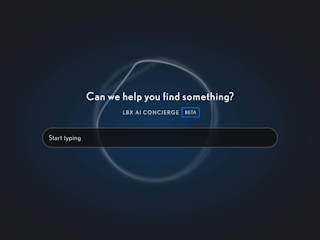Knowing about accessibility standards is one thing. Ensuring your Sitecore site is compliant requires ongoing support and effort. And this is where individuals who could help make this happen, are probably already (over) committed to completing other initiatives. These same individuals may be aware accessibility issues exist, but struggle with having the capacity to tackle a site-wide accessibility assessment and achieving compliance.
So let’s pause for a moment and discuss gardening.
What does gardening have to do with web accessibility?
This year I decided to create a garden. When the garden was planted it looked pristine and healthy. Unfortunately, it didn’t take long for little weeds to crop up.
At a minimum I wanted to protect my initial investment and of course, have access to fresh vegetables. The challenge came when I realized I did not have a plan on how I would maintain the garden.
Commit to trying
I decided I would spend a few minutes each day in the garden. I watered the plants and added extra nutrients when necessary. I inspected for potential infestation. I pulled weeds as soon as they became visible. I could have let the weeds grow but realized that pulling ‘young’ weeds take less effort and reduces the risk of disturbing neighbouring plants.
I’ll stop there with my garden story but it serves a purpose.
Anything that prohibits healthy growth in a garden is, in my opinion, similar to a site that presents accessibility issues. Visitors should not be impeded from completing their intended task. When they are faced with this situation, it’s fair to expect they will leave the site (and possibly choose never to return).
And providing an accessible site is not just the right thing to do – legislation exists in some regions, which can be enforced with financial impacts. Consider the court case Jared Spool recently tweeted about where ‘A blind customer couldn’t use Winn-Dixie’s website. He sued. Changes are coming’.
Standards and legislation do vary across regions and are quite in-depth. So here are a few, useful links:
- W3C Web Accessibility Guidelines
- US Section 508 Standard
- Accessibility for Ontarians with Disabilities Act (AODA)
So If you’re still with me, here are a few key activities that can help you get started on identifying and addressing accessibility issues.
Identify most visited, most valued pages
You need to have access to analytics for your site
- Using Sitecore and Experience Analytics? Via the ‘Audience’ tab you can access details such as value per visit, number of visits, average duration, bounce rate, conversion rate etc.
- Using Google Analytics? Pull a ‘Pages’ report which offers details such as page value, page views, average page views, average time spent, bounce rate etc.
If you have access to both sets of reports or a similar mix - fantastic. Use this opportunity to cross-validate the details to help build your initial list of pages.
Curious about how Sitecore Analytics and Google Analytics complement each other?
Confirm accessibility issues
Next step requires making use of a WCAG compliance testing tool (aka a validation tool).
When discussing options with our Valtech QA team (formerly Nonlinear) they reminded me we use our own in-house accessibility validation tool to support our Sitecore and Keystone customers. But there are lots of validation tool options out there.
For example, the team recommended trying ‘Total Validator’. It offers a free accessibility checker (Basic version) and a Professional version too.
Whichever tool you decide to use, the report will provide results on how your page(s) are not WCAG compliant.
Here’s an example of a common issue the tool can identify. An image on a page is missing the alternative text (ALT text). This missing text directly impedes assistive technologies in identifying the image and conveying the image’s purpose to a visitor.
Similar to pulling ‘young’ weeds, issues like this one can be easily resolved. If you’re using Sitecore, a Content Author would log in, access the relevant page in the Content Tree, populate the missing ALT text description and publish the change.
The example above also shows where some accessibility requirements are content-specific (or design-specific). They cannot be enforced by a CMS tool. So you will need to enlist the help of content author(s) and designer(s) too to help resolve existing issues and contribute to maintaining a WCAG compliant site.
Develop an Accessibility Maintenance Plan
When reviewing your site analytics, did you notice a small percentage of your pages yield the majority of traffic? If so, then the ‘Pareto principle’ is in play. This works in your favour because any effort put towards resolving accessibility issues across these key pages will benefit a good portion of the visitors to your site.
Depending upon the type and volume of issues identified in your most visited pages, you may need to address the rest of the site in the mid- to longer term.
Keep this in mind when seeking support for your initial compliance efforts as well as for gaining buy-in to build an accessibility maintenance plan too.
If you’re still unsure of where to start, we offer a cost-effective audit approach to help assess Sitecore builds, design and content against WCAG requirements.


